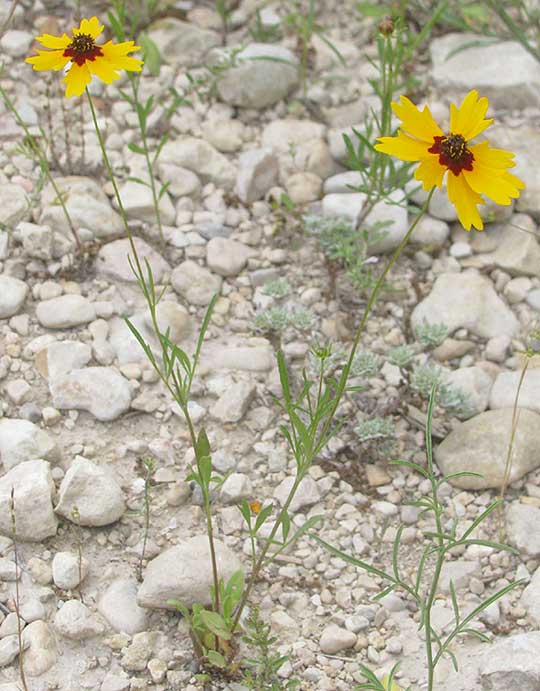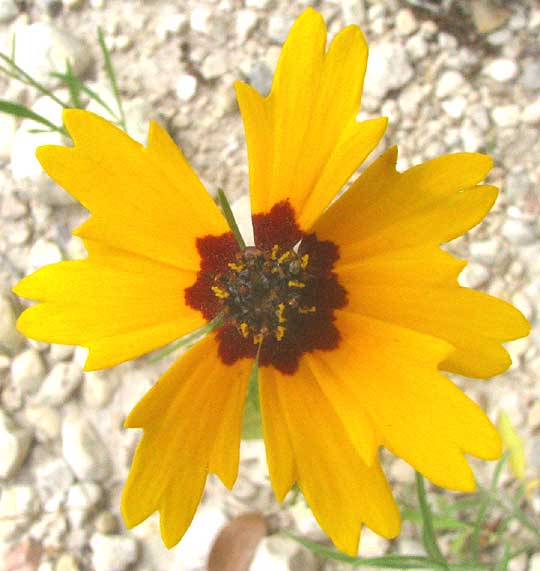Excerpts from Jim Conrad's
Naturalist Newsletter
from the May 26, 2013 Newsletter issued from the Frio Canyon Nature Education Center in northern Uvalde County, southwestern Texas, on the southern border of the Edwards Plateau; elevation ~1750m (~5750 ft); N29.62°, W99.86°; USA
GOLDENMANE
Biking across the Dry Frio's valley floor, thanks to our long-term drought, most of the grassland still is dun colored with few wildflowers. Pictures from past years at this season show a profoundly green and floriferous grassland between the hills. Still, around buildings where a little rain has run off roofs you get green patches, as well as alongside streams, or what usually are streams. One spectacular wildflower showing up as soon as you approach the immediate gravelly or cobblestone floodplain of certain streams is the one shown below:

A close-up of one of those pretty flowering heads is provided below:

This 15-inch tall (40cm) wildflower is obviously a member of the huge Daisy or Composite Family, so the yellow, purple-based, petal-like things radiating from the flower head's dark center are ray flowers, while the dark "eye" is composed of numerous tightly crammed together, dark purple disc flowers.
Very often but not always when you see a daisy-type wildflower on which the yellow ray flowers are lobed at their tips as on this blossom, you have a member of the genus Coreopsis, and that's the case here. This is COREOPSIS BASALIS*, often known as Goldenmane.
Goldenmane is endemic to Texas and a bit of Oklahoma and Louisiana. It's so pretty that it's planted in gardens elsewhere, and has escaped into the wild in much of the US Southeast and southern California.
In our area there's another very similar and closely related coreopsis, Coreopsis tinctoria, sometimes called Goldenwave or Plains Coreopsis, and that species is much more widespread and more extensively escaped into the wild than our Goldenwave. The easiest way to distinguish the two species is that our Goldenmane's ray flowers are mostly deeply four-lobed at their outer ends, while the Goldenwave's are typically three-lobed -- though sometimes the middle lobe will be slightly cleft.
In fact, I thought I had a Goldenwave before I "did the botany," because back in Mississippi and Kentucky we had the more common Goldenwave. However, Coreopsis is a big genus with numerous endemics sprinkled here and there, so I knew I'd be "do the botany" before saying anything about this particular plant.